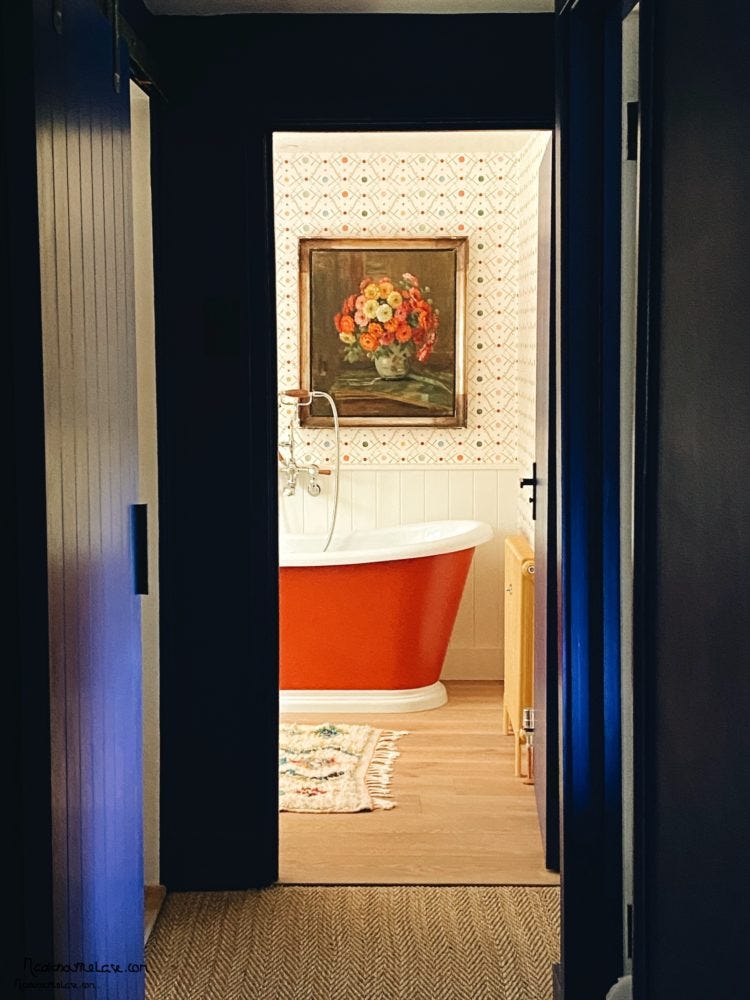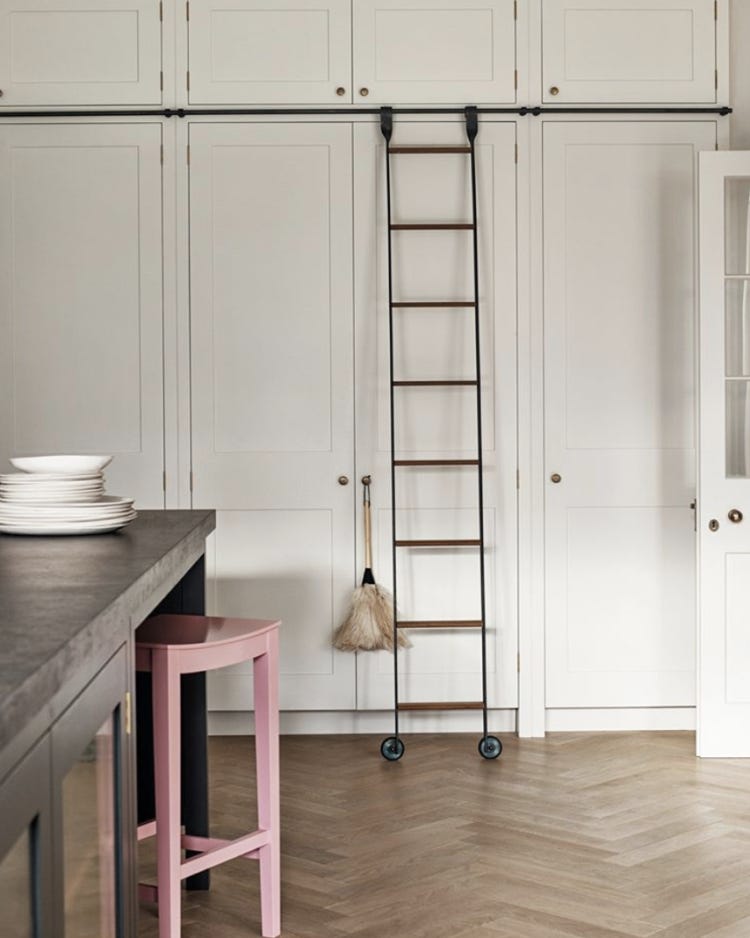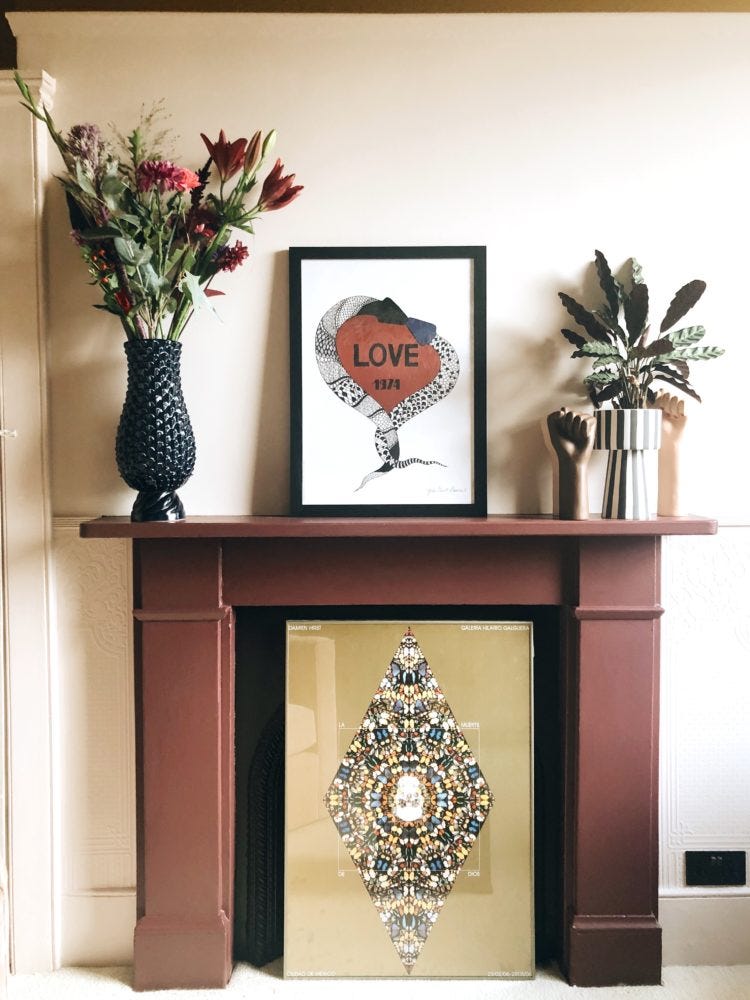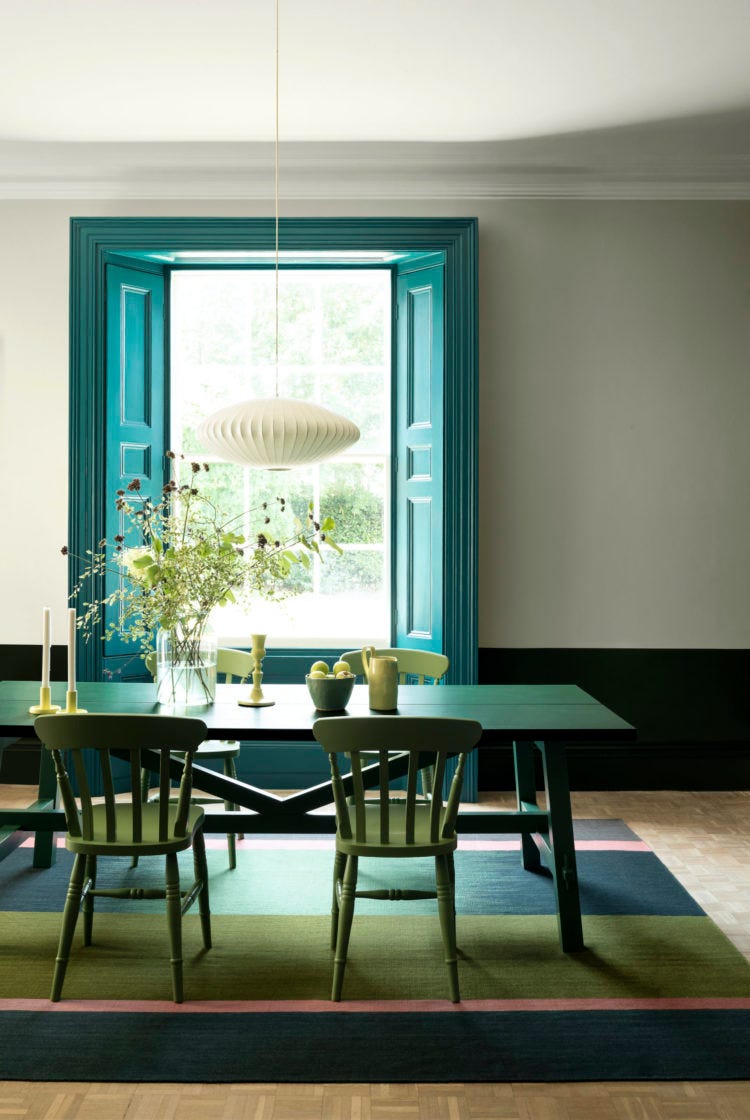1 Ask yourself what feelings you need to have in the room you are decorating and see if the colours you have chosen make you feel that way.
2 Make a floorplan to check that everything fits in your room and how you can arrange it within the space you have. And don’t forget to check thoroughfares and paths between. You need around 90cm for two people to pass. A dining table needs around 1m all around to allow chairs to be pulled in and out. This will be tight for someone to pass behind if someone else is sitting down. This will matter if the table is between them and the door.
3 When you have chosen your colour palette add a burst of a disrupter shade that makes your heart sing: bright orange bar stools, a metallic blue lampshade, a neon green cushion.
4 This disrupter colour should appear in other rooms to tie them together but vary the objects: in a picture here, a vase there, a bedside table or a rug detail. This is how you form a red thread: a strand of colours, textures and styles that run throughout your home to make each room link and to create a cohesive scheme.
5 Always buy the biggest rug you can fit (don’t forget door clearance) and afford. If the budget is tight buy a piece of patterned or plain carpet with a texture and have the edges bound in a contrasting colour.

6 If you’re not sure about what proportion of which colour try the 60, 30, 10 rule: 60 for the largest space – probably the walls, 30 for a piece of large furniture and a rug and 10 for an accent. This doesn’t include patterns which should be made up of variations on that theme.
7 When decorating one room don’t forget the views of the rooms it looks into or what you see when you walk past a doorway. Curate those views: a well positioned picture or a vase on the console will bring everything together.

8 Big is generally better when it comes to accessories: large rugs, lamps, vases will always bring a sense of expensive luxe to a room.
9 Every room looks better with something vintage in. There are no exceptions. It doesn’t have to have belonged to your Granny – if it came someone else’s Granny and you found it on eBay that’s fine.
10 Shapes are just as important as colours: rooms and furniture are often a series of square and rectangles – throw in some ovals and circles for contrast. This applies to cushions too.
11 Add something unexpected: Always add at least one thing that doesn’t appear to go, or is unusual. I have a six ft tall brass palm tree lamp, you might have a hand crocheted blanket in a minimalist space or a concrete table in a maximalist living room.
12 Use white paint sparingly. Do you always wear a white top with everything in your wardrobe? Sometimes another shade works better with your colour scheme.
13 Bring in as many textures as you can – especially if you prefer a restricted colour palette – velvet and linen, carpet and cashmere, silk and cotton. Don’t forget fringing and embroidery.
14 Large grey floor tiles look like pavements. Who wants that?
15 Don’t follow trends unless when you see them you feel like you are greeting an old friend you haven’t seen for ages or experience a coup de foudre that takes over your thoughts and leaves you thinking of nothing else.










A great list! I very much agree with number 4 - “This disrupter colour should appear in other rooms to tie them together but vary the objects... This is how you form a red thread: a strand of colours, textures and styles that run throughout your home to make each room link and to create a cohesive scheme.” This is so important, it will create a flow and connect places together in a very natural, comfortable, almost unnoticeable way, building up the atmosphere and a unique story of a home. Especially in connection to number 7, it is great connecting rooms (or views of the rooms) to each other by approaching wall colour choices of adjacent rooms as a whole, as creating a composition. This will also create a good flow and cohesive design plus the views from one room to another can become little works of art in themselves.